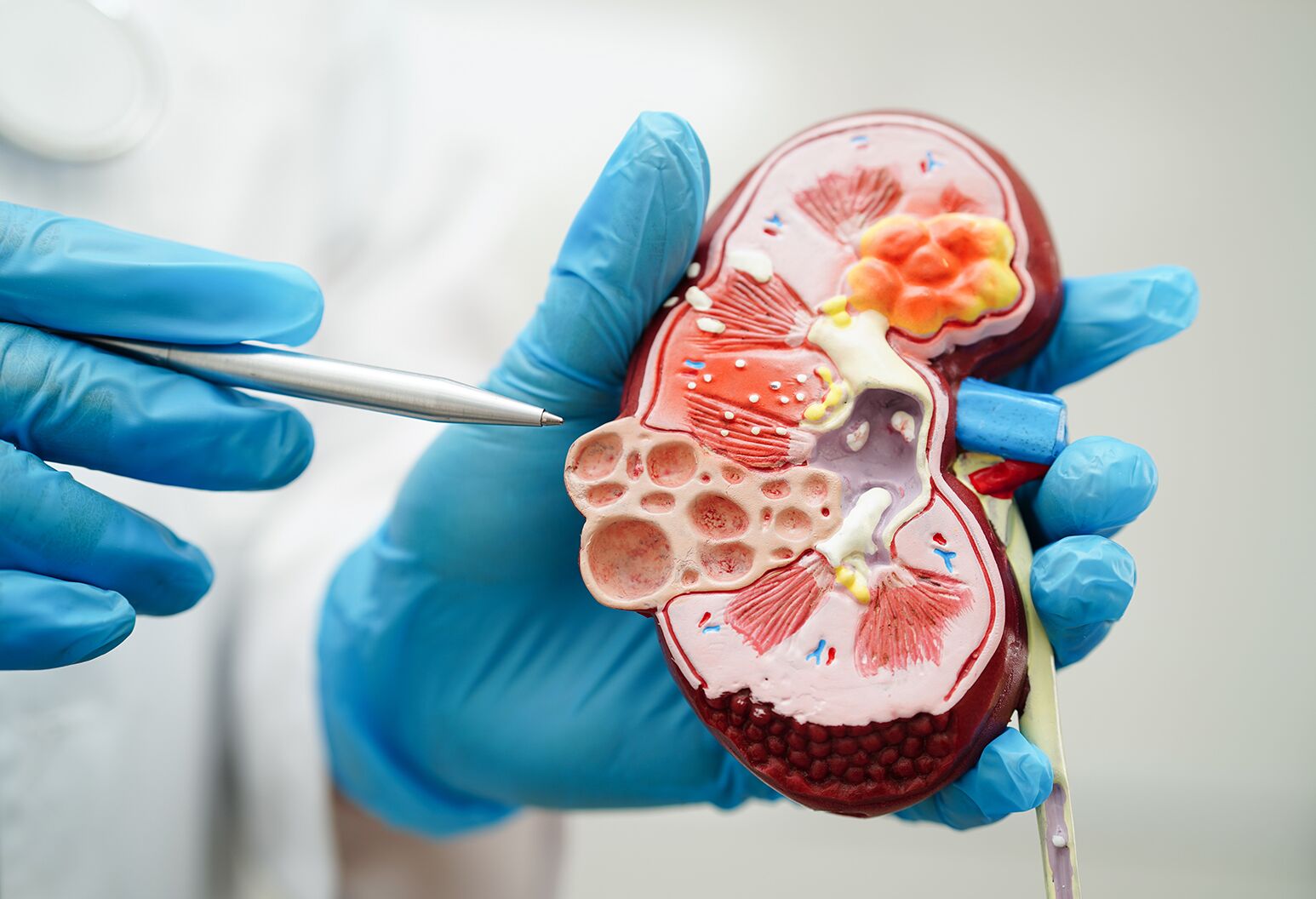
This 35 question renal quiz is designed for medical students and covers key concepts in kidney structure, function, and pathophysiology. As always, you can answer anonymously, with immediate feedback, and can try again as often as you like.
A patient with long-standing autoimmune disease develops fatigue and haematuria. Blood tests show elevated creatinine and low complement levels. Which renal condition is most likely?
Which of the following features best distinguishes the descending limb of the loop of Henle?
A 22-year-old woman presents with dysuria and frequency. Midstream urine shows pyuria and bacteriuria and E.Coli is the suspected pathogen. What structural feature of uropathogenic E. coli helps it adhere to uroepithelium and cause infection?
A 70-year-old man presents with reduced urine output and rising creatinine over 2 days. He has no previous creatinine result on record. Which of the following findings would suggest chronic kidney disease rather than acute kidney injury?
A 16-year-old presents with dysuria and suprapubic pain. Urine microscopy shows pyuria and bacteriuria. What is the most likely pathophysiological mechanism?
A 35-year-old has normal GFR but persistent metabolic acidosis with a normal anion gap. Which mechanism most likely explains this?
A 52-year-old man with known heart failure and low blood pressure has a sudden drop in urine output. BP is 90/60 mmHg, and creatinine has doubled from baseline. Which of the following best describes this type of renal injury?
Which of the following substances is normally not present in significant amounts in healthy urine?
Why is serum urea a less reliable marker of kidney function than creatinine?
A 60-year-old with long-standing hypertension presents with fatigue and poor appetite. Bloods show eGFR of 28 mL/min/1.73m² (reduced) and normocytic anaemia. What best explains his anaemia?
A patient has bilateral renal artery stenosis. Which of the following is a likely consequence?
Which of the following findings suggests post-renal failure?
A 20-year-old man develops haematuria within 24 hours of an upper respiratory infection. Urine shows red cell casts and mild proteinuria. What is the most likely diagnosis?
Why does kidney disease often lead to metabolic acidosis?
Which of the following most accurately reflects a key limitation of eGFR in clinical practice?
Which of the following substances is secreted into the renal tubule rather than reabsorbed?
Which of the following is reabsorbed in the proximal tubule and nearly completely cleared from the filtrate in a healthy individual?
Which of the following best describes the role of antidiuretic hormone (ADH) in the kidney?
A 25-year-old male is found to have microscopic haematuria following a sore throat 2 weeks ago. Which of the following best describes the underlying pathophysiology?
Which of the following best describes the blood flow route into the glomerulus?
A 4-year-old is brought in with swelling around the eyes, especially in the morning. Urine dipstick shows 4+ protein. Which of the following mechanisms best explains the oedema?
Which cell type lines the glomerular capillaries and plays a critical role in filtration?
In a healthy nephron, where is the majority of filtered sodium reabsorbed?
A patient with chronic kidney disease is noted to have high serum potassium. Which of the following is the best explanation?
Which process contributes most to the concentration of urine in the loop of Henle?
A patient presents with confusion. Bloods show: Na⁺ 140 mmol/L (normal), K⁺ 6.3 mmol/L (high), HCO₃⁻ 17 mmol/L (low), creatinine 320 μmol/L (elevated). Which acid–base disturbance is most likely?
What is the best explanation for high serum creatinine in kidney failure?
A 60-year-old with long-standing diabetes has microalbuminuria. What does this finding indicate?
A person with dehydration is producing concentrated urine. Which part of the nephron is primarily responsible for this response?
Why is it important to interpret eGFR in context of age and body size?
Which of the following electrolyte transport processes occurs primarily in the thick ascending limb of the loop of Henle?
Which of the following occurs in the distal nephron in response to aldosterone?
Which of the following best describes how parathyroid hormone (PTH) affects calcium and phosphate handling in the kidney?
A 65-year-old man with chronic kidney disease has a GFR of 18 mL/min/1.73m² (reduced)
. He is fatigued and has bone pain. Labs show: phosphate ↑, calcium ↓, PTH ↑. What is the most likely underlying mechanism for his bone pain?
A 28-year-old man presents with haemoptysis and haematuria. Urine shows red cell casts, and creatinine is elevated. Chest X-ray reveals pulmonary infiltrates. Which of the following best describes the pathogenesis of his condition?
No comments:
Post a Comment